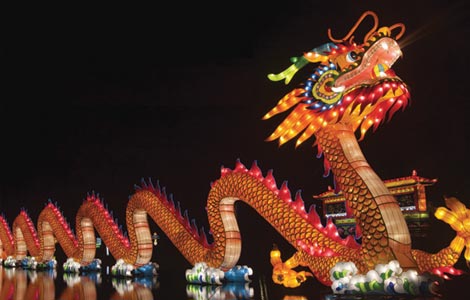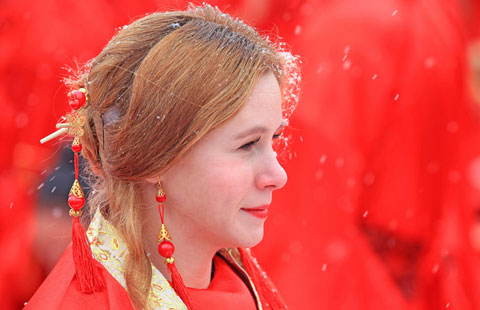Starry, starry night
Updated: 2015-01-07 08:04
By Xing Yi(China Daily)
|
||||||||
 |
|
Inscriptions on a stone stele from the Song Dynasty. [Photo provided to China Daily] |
Those constellations are further grouped into three Yuan (Enclosures), which are three round areas around the North Celestial Pole that can be seen year-round in the Northern Hemisphere, and 28 Xiu (Mansions or lunar lodges), which are similar to the zodiacal band but are divided according to the movement of the moon over a lunar month instead of the sun in the course of a year.
Each constellation has its name and meaning. For example, Zi Wei Yuan (the Purple Forbidden Enclosure) reflects the Forbidden City where emperors and their families lived. Some of the constellations in it are named Emperor of Heaven, Crown Prince and Guardian. Tai Wei Yuan stands for the Supreme Palace, where the constellations are named after officials and ministers.
In the Tian Shi Yuan (Heavenly Market Enclosure), the constellations are named after the tools, facilities and people in the market, such as Textile Ruler, Jewel Market and Officials of the Market.
Unlike Western constellations where the stars in one constellation often resemble a shape, Chinese traditional constellations are largely simple dots and lines, and many constellations have only one or two stars.
The book introduces all the Chinese constellations with Bu Tian Ge (Ballad of Sky Walking), which was compiled around AD 600, in a long verse containing the names, locations and features of those constellations.
The book came about through an accidental discovery in 2009, when Qi was cleaning old Chinese astronomical instruments in Beijing Ancient Observatory with Wan.
They found there were many differences between the constellations on the instruments and the astronomy chart inscribed on the stone stele from the Song Dynasty, which was found in Suzhou, East China's Jiangsu province, and believed to be the oldest stone stele of its kind.
The discovery led Qi and Wan to study the differences.

 Memory of stampede victims honored on 7th day
Memory of stampede victims honored on 7th day
 Russian airline stewardess flying over China
Russian airline stewardess flying over China
 Two New York policemen shot after armed robbery
Two New York policemen shot after armed robbery
 Alabama puts spotlight on China in 2015
Alabama puts spotlight on China in 2015
 Young men farm for the future
Young men farm for the future
 Sausage seller uses mobile payment for better hygiene
Sausage seller uses mobile payment for better hygiene
 Top 10 biggest recall of cars in China in 2014
Top 10 biggest recall of cars in China in 2014
 Culture Insider: 6 things you may not know about Minor Cold
Culture Insider: 6 things you may not know about Minor Cold
Most Viewed
Editor's Picks

|

|

|

|

|

|
Today's Top News
Two New York policemen shot after armed robbery
US stands by plan to pull troops from Afghanistan
ZTE talks mobile at CES
Top 10 biggest recall of cars in China in 2014
Two New York City police officers shot and wounded
NYC rallies around Liu family
Community rallies around Liu family
Stock link bid for HK, Shenzhen
US Weekly

|

|








